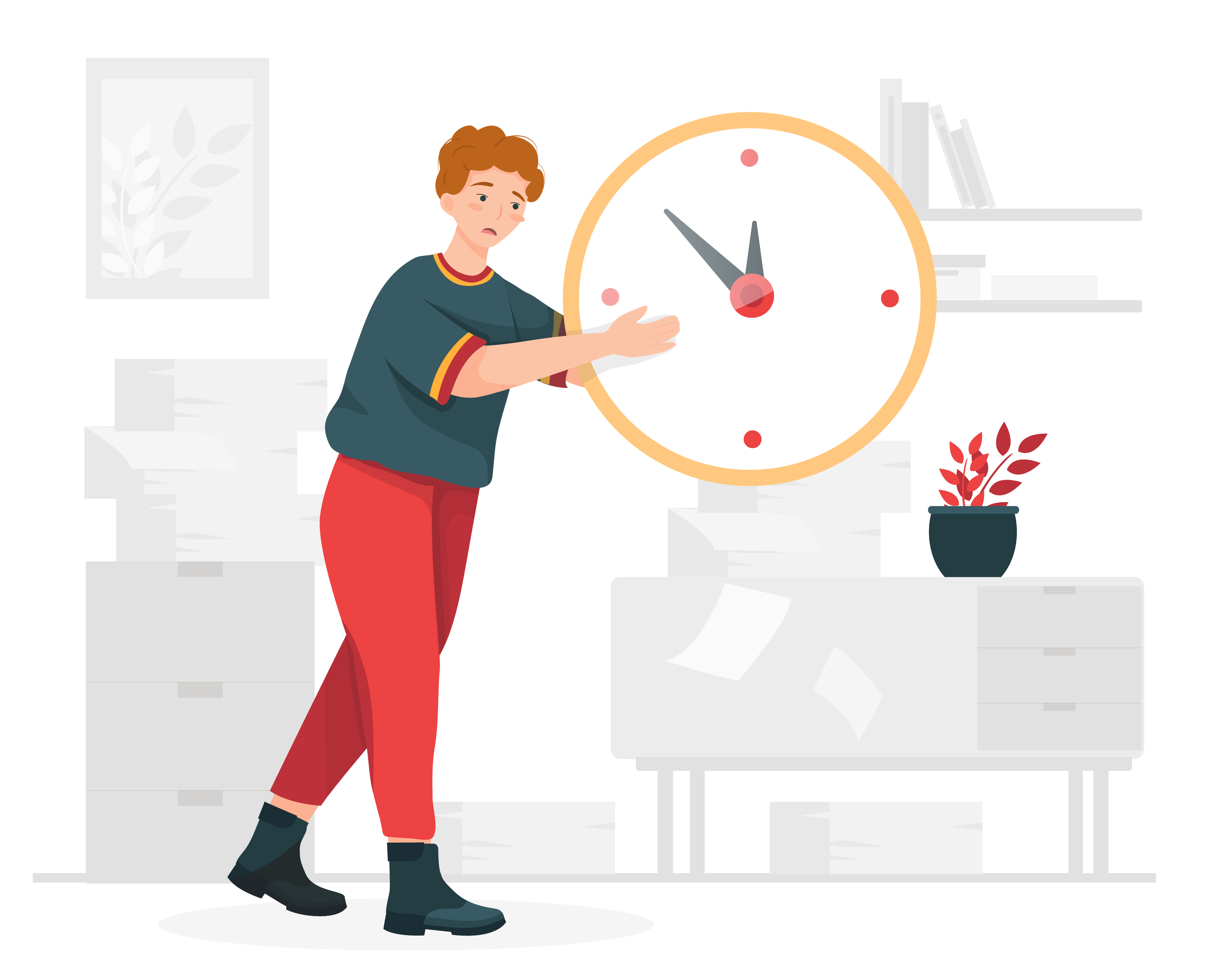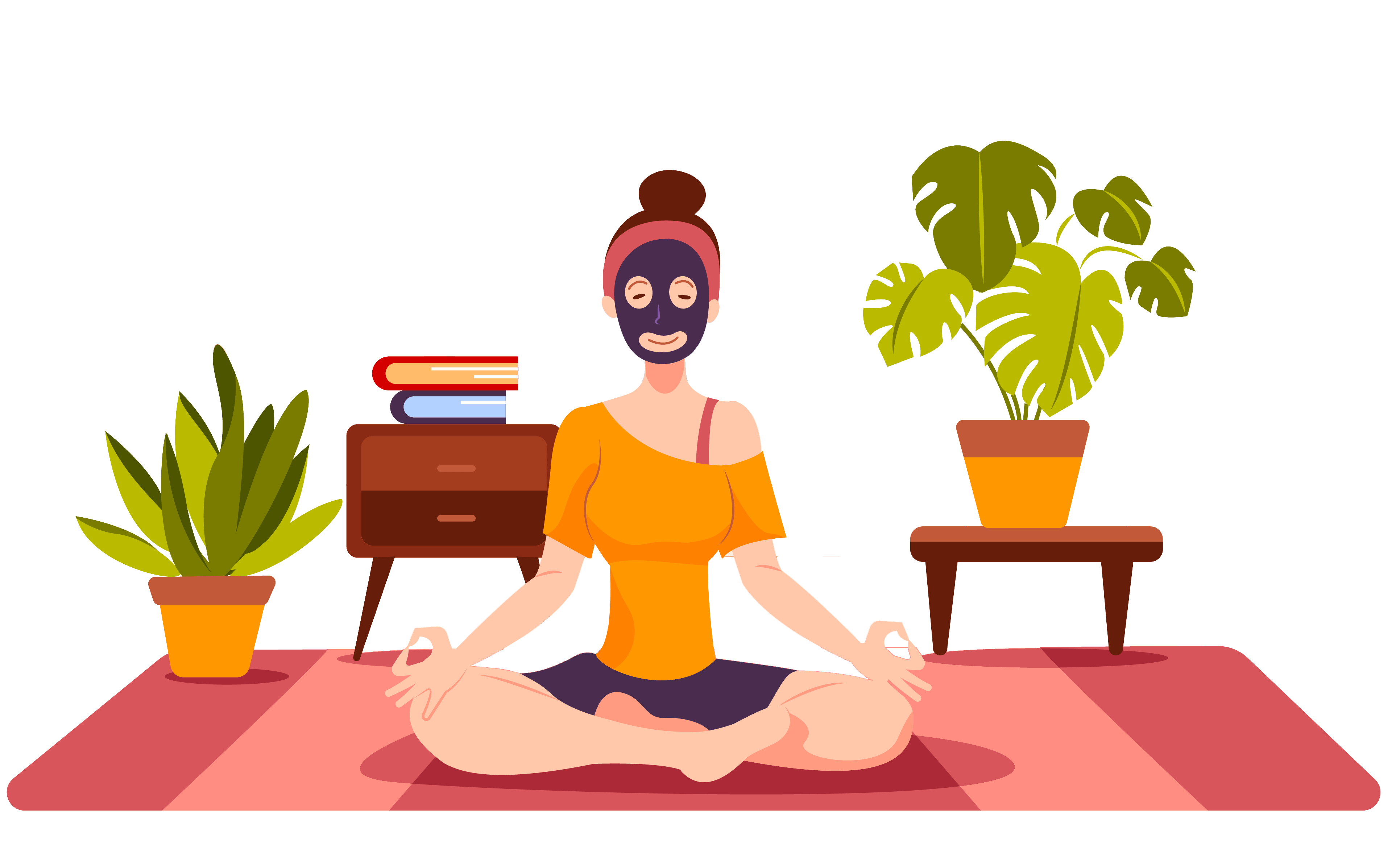25 Ways to Practice Mindfulness to Lower Anxiety and Increase Self-Care

Don’t Have Time To Read?
Download the guide!
What is mindfulness?
Mindfulness is a thought process and/or meditation where you focus on the present moment. You take your focus away from things or situations you can’t control and focus on what you can.
It’s something that can be practiced, but it’s not really about techniques. There are tools that can be developed to help in becoming more mindful but in the end, mindfulness is about a way of being, not doing.

Why is mindfulness important?
Mindfulness is crucial to maintaining your overall mental health. It rests in the anchored knowledge that “I am okay, and because I’m okay, I can be right here, right now.” Mindfulness grows in a state of gratitude in the midst of the pain in the present.
How to Use This Mindfulness Guide:
STEP 1: Read through the full list of mindfulness exercises.
STEP 2: Pick the item that resonates with you the most or is the easiest to implement into your current lifestyle.
STEP 3: Each week, choose a new technique to include in your mindfulness routine and increase the overall mental health of you and your family.
Contents
pick your chapter
CHAPTER 1
Be Kind to Yourself
CHAPTER 2
Use the “Square Breathing” Technique
CHAPTER 3
Name Your Fears
CHAPTER 4
Tune into Your Senses
CHAPTER 5
Look For Ways to Care & Be Cared For
CHAPTER 6
1-minute Mantra
CHAPTER 7
Window Gazing
CHAPTER 8
Guided Meditation
CHAPTER 9
Say Goodbye to Your Anger
CHAPTER 10
Stop, Drop, and Practice Gratitude
CHAPTER 11
Schedule Time For Yourself & Your Family
CHAPTER 12
Stay Hydrated
CHAPTER 13
Get Moving
CHAPTER 14
Write It Down
CHAPTER 15
Name Your Colors
CHAPTER 16
Allow Yourself to Say No
CHAPTER 17
Practice Mindful Eating
CHAPTER 18
Wake Up With Intention
CHAPTER 19
Digital Detox
CHAPTER 20
Teach Mindfulness to Your Kids
CHAPTER 21
Use Essential Oils
CHAPTER 22
Create a Mindful Jar with Your Child
CHAPTER 23
Create a Daily Routine
CHAPTER 24
Read Books on Mindfulness
CHAPTER 25
Download a Meditation App
CHAPTER 1
Be Kind to Yourself
Each day, try to take a moment for yourself to practice presence. Agree with yourself that these are difficult days, but you’re okay, and you get to be present this day, in this moment.
Listen to your next breath and allow yourself to slow its pace.

CHAPTER 2
Use The “Square Breathing” Technique
For the square breathing technique, all you’re going to do is breathe in for a count of 4, hold for a count of 4, breathe out for a count of 4, and hold for a count of 4. The counting will help your mind stay focused on the activity.
Breathe in…2…3…4,
Hold…2…3…4,
Breathe out…2…3…4,
Hold…2…3…4.
Try to take a few minutes each day to get really present to yourself. See this as a way of slowing your thoughts, especially if you struggle to contain them.
CHAPTER 3
Name Your Fears
Dan Siegel calls it “name it to tame it”. Panic is fueled by fear; we feel out of control, and we quickly find ourselves swimming in deep, dark, swirling waters that make it hard for us to find our bearings.
In that scary place, you’re going to tell yourself, “this is panic and it will pass soon”
Panic gets short-circuited when we name it, and to the best of our abilities, define its space. “This is panic, and it will pass” unplugs the fear and will help you regain your equilibrium.
CHAPTER 4
Tune Into Your Senses
Here’s a brief exercise that can provide relaxation and promote greater mental health.
This is how it works:
Sit comfortably, with no crossed legs, or arms, preferably in a straight back chair.
Begin by closing your eyes and making a mental list of all the sounds you can hear around you.
Next, tune into the sensations your body is feeling (the floor pushing against the bottom of your feet, your socks around your ankles.)
Lastly, can you smell anything in the environment, perhaps from a recently made meal?

CHAPTER 5
Look For Ways To Care And Be Cared For
What can you do today to engage, to join in, to become a part of; that would bolster for you a deeper sense of meaning?
Try picking up groceries for a neighbor or take a long walk with your family. Living in the space of the unknown is exhausting and this gives your mind something solid to hold onto.
CHAPTER 6
1-minute Mantra
While sitting or laying down, for one minute repeat a positive mantra such as
- I am happy. I am healthy.
- I am strong. I am safe.
- I love my life.
Or pick a favorite quote that empowers you.
Need an inspirational quote? Here are a few suggestions.

CHAPTER 7
Window Gazing
Take a seat at your window and notice the nature around you. Don’t try to make sense or name anything. Just notice the colors and textures of the leaves, hear the chirp of the birds, and the sounds of nature.
Do this for five minutes or so, and if you notice your mind wandering, try to bring it back to the present and focus on what’s right outside your window.

Did you know?
A wandering mind correlates with higher degrees of what is referred to as working memory. Cognitive scientists define this type of memory as the brain’s ability to retain and recall information in the face of distractions. 1
CHAPTER 8
Guided Meditation
You can find guided meditation videos on YouTube to fit any lifestyle. If you only have five minutes to spare in the morning, search for “5 minute morning meditation”.
Or if you have trouble sleeping, you can find bedtime guided meditations that help you relax and let your body and mind get some much needed rest.
CHAPTER 9
Say Goodbye to Your Anger
We all experience anger and for some of us, it can be overwhelming. Practice saying goodbye to your anger with these steps:
1. Sit in a comfortable chair and take some deep breaths.
2. Notice the feeling of your feet on the ground.
3. Think back to a time when you experienced a bout of anger, putting aside any feelings of regret or shame.
4. Scan your body for any feelings of tightness or warmth as you recall the anger.
5. Be mindful of your feelings and accept that anger is a normal human emotion.
6. Say goodbye to your anger, releasing it like a balloon in your mind. Then slowly bring your awareness back to the present.
7. Scan your body again to see how you feel physically and emotionally.

CHAPTER 10
Stop, Drop, and Practice Gratitude

Take breaks throughout the day to stop and practice gratitude for your life and your surroundings. Living life in the moment and showing gratitude is known to increase mood and lower feelings of anxiety.
You can do this:
- In the car while driving to work.
- In line at the grocery store.
- Right before you sit down to dinner with the family.
- During your morning/evening shower.
- After putting the kids to bed.
CHAPTER 11
Schedule Time for Yourself and Your Family
Nothing stresses us out more than being crunched for time! Everyone loses their cool when schedules are full to the brim and there is no extra time to look for a rogue shoe or turn the car around for a forgotten instrument. The most crucial times to add margin are during transitions: morning, after school and bedtime.
No way to lighten the weekday load? Then make sure to plan for some time to decompress on the weekends. Build in breaks, naps or quiet times into a Saturday or Sunday afternoon.
CHAPTER 12
Stay Hydrated
Did you know that 75% of humans are chronically dehydrated?
Dehydration contributes to foggy brain, irritability, and mood swings. If you have trouble making sure you’re getting enough water, here are some tips:
Set an alarm on your phone (or fitness app) to notify your every hour to drink water.
Get a dedicated water bottle that you fill up every morning with the goal to finish by mid afternoon or evening (depending on the size)
CHAPTER 13
Get Moving
Movement is so helpful in keeping your mind and body functioning at its best. It can be as simple as taking a five minute walk around the neighborhood or scheduling time on the weekends to go on a hike with the family.
Here are some ideas for you to try:
- Throw a dance party in your living room
- Go on a walk or ride bikes with the family
- Set up an obstacle course in the backyard
- Go for a run or a hike
- Do some light stretching before bed/first thing in the morning
CHAPTER 14
Write It Down
Journaling not only helps you to relieve stress, it allows you to self reflect on your day, your feelings, and your interactions with others.
Some ways to practice journaling:
- Take five minutes a day to write a one sentence summary of your day.
- Free write. Write whatever comes to mind, not caring about structure, spelling, handwriting, etc.
- Spend some time in the morning writing down your intentions for the day and what you hope to accomplish.

CHAPTER 15
Name Your Colors
When you’re feeling anxious, depressed, or overwhelmed, one way to gain control is to name your colors. Notice your surroundings and what you’re wearing. Name all of the colors you see, even going beyond the basic “blue, red, yellow” and using “chartreuse, magenta, or violet”.
This will help you calm those strong feelings and emotions and give you a good sense of self-control.
Can you name all of the colors in the photo below?

CHAPTER 16
Allow Yourself to Say No
Are you overextending yourself and adding item after item to your to-do list? You might discover that there are demands you make of yourself by expecting perfection when good enough will do.
You can learn to say no more often in order to give yourself some breathing room. You can take time to prioritize so that all of the demands on you don’t feel like equal burdens.
CHAPTER 17
Practice Mindful Eating
The foods we eat very much affect how we feel and think on a daily basis. Obviously, a change in diet is not going to make your mental health problems disappear, but it is important to consider how your diet might be negatively impacting your everyday mental health.
Some ways to practice mindful eating:
- Eat slowly and chew your food thoroughly.
- Focus on your emotions while eating.
- Avoid distractions like watching tv or playing on your phone.
- Practice gratitude for your food.
CHAPTER 18
Wake Up With Intention

We’re all guilty of this. As soon as the alarm goes off, we pick up our phone and check our messages, email, or we scroll through social media. Before you even get out of bed, you’re already feeling anxious and flustered.
Instead of grabbing your phone first thing, take a minute or two to scan your body while laying in bed.
What are you feeling?
This is also the time to set your intention for the day. How do you want your interactions to go while at work? How do you want to interact with your spouse or children?
Setting your intention for the day allows you to raise your emotional energy and set a positive tone for the day.
CHAPTER 19
Digital Detox
If you’re someone who constantly has their head down, looking at your phone, it may be time for a digital detox.
Too much screen time is known to increase feelings of anxiety and stress, and for teens, it can cause increased feelings of depression.
Consider how much you and your kids need their phones and tablets for work and school and then pick a time to detox. Spend an hour or two on the weekends cooking a meal together or drawing. Or if you have younger kids, try finger painting.
Check in regularly with the family and increase the detox session as needed.
Click here for a 30-day digital detox challenge!

CHAPTER 20
Teach Mindfulness to Your Kids
The best way to hold yourself accountable is to teach what you’ve learned to others. Young children and teens benefit from mindfulness just as much as adults. Stress from school, friends, and after school activities can leave your kid feeling overwhelmed.
Teach them the breathing techniques that have helped you.
Download a meditation app to their phone
Buy them a journal so they have a free space to write down their thoughts
Spend time each day with younger children, getting down to their level and playing with dolls, blocks, puzzles, etc.
For more ideas on how to make meaningful connections with your kids in five minutes or less, click here for a FREE 5-day parenting challenge!
CHAPTER 21
Use Essential Oils

Essential oils are a great way to engage your senses while practicing mindful breathing.
Add a few drops of lavender to your wrist, a cotton ball or a soft piece of fabric and take a few slow, deep breaths. Concentrate on the scent as you breathe in and out. Close your eyes and relax your shoulders, releasing the tension in your body.
New to essential oils? This article on 18 Essential Oils for Anxiety will help you to learn more about the essential oils you can use to relieve your symptoms of anxiety.
CHAPTER 22
Create a Mindful Jar/Bottle with Your Child
It can be difficult for children to tackle tough emotions. One way to help them practice mindfulness is to create a mindful jar or bottle.
Use any clear jar with a secure lid (stick to a plastic bottle for younger kids). Put a few big spoonfuls of glitter in the bottom of the jar and fill the rest of the way with water.
When your child is feeling stressed or anxious, have them shake up the jar to watch the glitter swirl, taking deep breaths as the glitter slowly falls back down to the bottom.
CHAPTER 23
Create a Daily Routine for Your Kids
Don’t wait until you or your child is on the verge of an anxiety attack or tantrum. Find ways to practice mindfulness everyday and add it to both of your daily routines.
A few examples:
- When you’re in the car, have them count how many green cars they see (and count with them.)
- Before bed, take five minutes to do some stretching or light yoga.
- After school, spend time with them doing their favorite activity.

CHAPTER 24
Read Books on Mindfulness
For Adults:
For Teens:
CHAPTER 25
Download a Meditation App
If you struggle with meditation or don’t know how to get started, meditation apps can help! Choose from guided meditations, calming music to help you fall asleep, or targeted meditations for anxiety and stress relief.
A few to try:
Headspace
Get access to guided meditations, sleep sounds, as well as meditations for kids and teens.
Calm
This is a great choice for those short on time. Get a quick 3 minute meditation, with access to longer 25-30 minute sessions when you have more time to spare.
Insight Timer
If you want to target a specific subject (such as anxiety or stress), this app has guided sessions to target what’s ailing you, as well as charts to track your progress.

WRAP-UP
If you would like help navigating your or your child’s anxiety, please give us a call. We specialize in helping families create an environment where deeper connection & healing can happen.
Marriage & Relationship Resources
Navigating Life Transitions Without Losing Yourself
Life is full of transitions: some exciting, some overwhelming. Maybe you’re adjusting to marriage or becoming a new parent. Maybe you’re facing career changes, moving, or grieving the loss of someone you love.For couples, transitions can either bring you closer...
How Attachment Styles Impact Your Mental Health
Have you ever wondered why some arguments with those you are close to feel more like a fight for survival than a simple disagreement? Or why you so frequently end up feeling anxious or shut down in certain relationships? Such questions get to the heart of how utterly...
3 Ways to Connect Better With Your Teen
If you’re the parent of a teenager, you’ve probably asked yourself, ‘What happened to my relationship with my kid?’ One day, they’re laughing at your jokes and telling you everything, and the next, they’ve put up walls. Conversations turn into power struggles....
Cedar Tree's Mission:
There are a lot of broken families who struggle to do life well together.
That’s why we help families create an environment where deeper connection & healing can happen.








